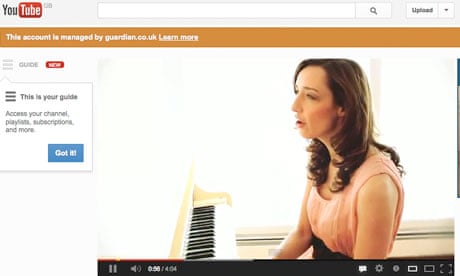In my last Plugged in blogpost I explored how record labels are making money from their official videos on YouTube and Vevo. So far, however, songwriters (including myself) have received next to no money from their collection societies, despite getting millions (in some cases hundreds of millions) of views. This is not only unfair, but unsustainable.
Collection societies such as BMI and ASCAP have blanket licences with Google-owned YouTube, which currently only pays royalties of about $40 per million streams, according to recent royalty statements. In the UK the PRS signed a deal with YouTube back in 2009 for a lump sum – a deal even the PRS would admit was really bad. A new licensing deal with the company is now being finalised, and sources close to the negotiations claim it will be better.
But songwriters may be missing out on YouTube ad revenue that they can rightly claim, including from user-generated content (UGC). BMI, ASCAP and PRS licences only cover performances – and YouTube videos that include music require a mechanical synch licence, as it "synchs" the music with visual media.
This licence is granted directly by songwriters and publishers. As they own the right to the actual composition they can also claim ad revenue from videos of YouTube users performing covers of their songs. Of course few people posting content on YouTube know they need such a licence – and those who do would most likely not know how to get in touch with the rights holder.
Hence, songwriters or their publishers have to "claim" their songs. Once they make the claim, they have to specify what type of ads they want served with the video. There are four types, all paying a different rate, and it's necessary to authorise each one. Ads that stream before the video (pre-rolls) pay more than the pop-up ones.
Different companies also pay differently, says Jay Frank, owner and chief executive of Nashville-based label/publisher DigSin. Ads for auto insurance – a highly competitive market – pay more than, for example, Procter and Gamble dishwashing detergent. "If you're clever enough to write a song about a car crash, and have a car insurance ad running with it, your rate may be five to seven times higher," Frank explains. "Tagging auto insurance will make you more than tagging Mumford & Sons, just because you sound like them."
"The real money to be made on YouTube, as far as I've seen, is when your song spreads among YouTube cover artists," says Frank. "Jenn Bostic's song Jealous of the Angels [published by DigSin] has been covered in more than 400 UGC videos online and we're collecting from most of those. If the person posting the cover doesn't type in that it's a Bostic cover, YouTube has no way of knowing. I have to discover it and go to them and lay the claim that it's my song."
Frank has recruited the services of InGrooves for audio fingerprinting. The company trawls YouTube to find copies of songs owned by Frank and his artists – and instead of taking the videos down, it adds advertising to them. At that point, if the person posting the video doesn't want the ads on it, they will have to take the video down.
Some publishers now even have a person who does nothing but pitch their songs to YouTube cover artists with large channels, says Frank. "If a song has 500,000 views it'll be a few hundred to a few thousand dollars that come into the pipeline," he explains.
Smaller publishers may not think it's worth scanning YouTube for covers, claiming their songs and adding ads to them if a video only has 5,000 views – but if you wait until it has a million hits you've already missed out on that ad revenue.
There are, however, still issues with the YouTube revenue share eco-system that need to be resolved, says music attorney Chris Castle. "If there is a 'dispute', then YouTube holds the money, then pays prospectively once the dispute is resolved. A dispute means that more than 100% of the song has been claimed by multiple parties, or that claims within the 100% are in conflict. Of course YouTube keeps monetising the songs during the dispute, as someone has claimed them."
This, he explains, creates a "black box" ("unattributable" revenue that remains with the company that collected it). "I have heard some estimates that the money in dispute is over $250m, but that's just an educated guess," he continues. "The easy solution to this is that YouTube requires disputes to be resolved outside of YouTube and continues paying claimants – after taking care that their initial claimants are likely correct."
Most songwriters are unaware that YouTube requires a mechanical synch licence, and may not even know if their publisher has signed a deal with the company covering the licence or not, on their behalf. YouTube requires publishers to sign non-disclosure agreements covering any deal they make with the company. Sources say these agreements are so tight that they're not allowed to reveal if they've even signed a deal.
There is potential for YouTube to come to a mutually beneficial understanding with the songwriting community, without it getting to the point of lawsuits, as in Germany. A first step would be the abolition of these prohibitive non-disclosure agreements. Without transparency, songwriters will conclude that the royalties they should've received remain in YouTube's black box.

Comments (…)
Sign in or create your Guardian account to join the discussion